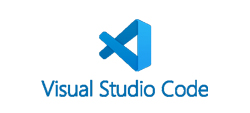
 Aug 21, 2023 |
Aug 21, 2023 |
Web development frameworks are essential to how we build and use websites and web apps in today’s digital world, which is changing quickly. Polymer.js is one of these dynamic frameworks that has gotten much attention. In this detailed piece, we detail Polymer.js’s functions, features, and benefits. We also show why it’s an excellent choice for modern web development.
Polymer.js: A Brief Introduction
Polymer.js is a JavaScript tool that is free and open source. It makes it easier to create web components. These components are building blocks that can be used to make interactive, reusable computer interfaces. Google made Polymer.js, letting writers make web apps focusing on reusability, modularity, and improving the user experience.
Polymer.js has the following features:
Web Components at Core
The main focus of Polymer.js is on web components. HTML, CSS, and JavaScript functions are wrapped up in these components. This makes it easy to manage and maintain code. Web Components make it easier to reuse code and keep different parts of a project separate. This makes projects cleaner and more organized.
Syntax for statements
Polymer.js uses a “declarative syntax” style, making creating custom elements easier. Developers can describe features using syntax similar to HTML, which makes writing code straightforward. This method makes it easier for development teams to work together and speeds up the development cycle.
Binding data both ways
In web apps, data flow must work well. Polymer.js has a two-way data binding system that syncs the user interface and core data models when data changes. This ensures the user experience is smooth and fast since changes are made automatically and immediately.
Integration of the Shadow DOM
Polymer.js uses the Shadow DOM, which lets styles and functions within components be wrapped up and kept separate. This keeps CSS styles from affecting other parts of the application. This makes the application easier to maintain and less likely to have side effects that were not meant.
CLI Polymer
The Polymer Command Line Interface (CLI) speeds up the development process by giving developers the tools and space to stage, test, and release their projects. This CLI lets developers focus on the quality and usefulness of their code instead of having to do the same things repeatedly.
Polymer.js makes the user experience better.
Polymer.js components are modular and can be used more than once. This makes the user interface features in different parts of a web app more consistent. This makes the user experience smooth and easy to understand, which makes users more interested and happy.
Made creation work better
Polymer.js speeds up the development process by making it easier to reuse and package code. Developers can create custom parts that perform specific tasks so they don’t have to write code repeatedly for similar features. This boost in speed means shorter development times and faster iterations of products.
A codebase that is easy to update and can grow.
Polymer.js uses best practices for building web components, which makes the codebase more straightforward to handle and keep up to date. Separation of interests and encapsulation of styles and functions make sure that changes to one component don’t affect others by accident. This makes the system more scalable and less likely to have bugs.
The ability to change and be flexible
With Polymer.js, developers can make components that fit the needs of their specific projects. The tool doesn’t force developers to use rigid structures, so they can change their members to match different use cases and design styles.
A step-by-step guide to putting Polymer.js to use
Let’s look at how you can start using Polymer.js in your web development projects:
Installing:First, use npm (Node Package Manager) to set up the Polymer CLI. During the creation process, this CLI will be your best friend.
Set up a project: Use the Polymer CLI to create a new project and choose from several themes to start development.
Component Creation: To make a new component, use the CLI. Components are the building blocks of your program, and each one has a particular set of functions.
Data Binding: Use two-way data binding to ensure your user interface and data models sync in real-time.
Style: The Shadow DOM’s encapsulation lets you style your components without worrying about global effects you didn’t plan.
Testing and Deployment: Polymer CLI gives you tools to test your components and launch your application on different platforms.
Polymer.js has become a flexible and dynamic platform that gives developers the tools to make modern and attractive web apps. Polymer.js is a strong candidate in web development frameworks because it focuses on reusability, modularity, and better user experiences.
By following best practices and using its key features, you can bring the quality and speed of your web development projects to new heights. As the digital world continues to change, it’s essential to use frameworks like Polymer.js to make websites that are quick and focused on the user.
Frequently Asked Questions:
1. What is Polymer.js?
Polymer.js is an open-source JavaScript library developed by Google for building web applications using web components. It simplifies the process of creating reusable, encapsulated components for web development.
2. What are Web Components?
Web Components are a set of standardized web platform APIs that allow developers to create reusable, encapsulated components. Polymer.js is built on top of these standards, making it easier to work with web components.
3. What is the main goal of Polymer.js?
The main goal of Polymer.js is to make it easier for developers to create and reuse web components. It provides a set of tools and libraries for building components and encourages the use of web standards.
4. How does Polymer.js differ from other JavaScript frameworks?
Unlike some other frameworks, Polymer.js is not a full-fledged application framework. It focuses specifically on helping developers build and use web components, leveraging the native browser capabilities.
5. Is Polymer.js only for building single-page applications (SPAs)?
No, Polymer.js can be used for both single-page applications and traditional multi-page applications. It provides flexibility for developers to choose the architectural approach that best fits their project.
6. Does Polymer.js work across different browsers?
Yes, Polymer.js is designed to work across modern browsers. It includes a set of polyfills to ensure compatibility with browsers that may not fully support web components natively.
7. How does Polymer.js handle data binding?
Polymer.js facilitates two-way data binding, allowing changes in the user interface to automatically update the underlying data and vice versa. This simplifies the process of keeping the UI and data in sync.
8. Can Polymer.js be used with other JavaScript frameworks?
Yes, Polymer.js can be used alongside other frameworks. It is designed to be interoperable, allowing developers to use it in conjunction with other tools and frameworks as needed.
9. Is Polymer.js actively maintained and updated?
Polymer.js is actively maintained. However, it’s advisable to check the official Polymer GitHub repository or website for the latest information on releases and maintenance.
10. Where can I find resources for learning Polymer.js?
The official Polymer documentation, tutorials, and the Polymer GitHub repository are excellent resources for learning Polymer.js. Additionally, there are many community-contributed tutorials and articles available online.






 Frontend
Frontend 





















